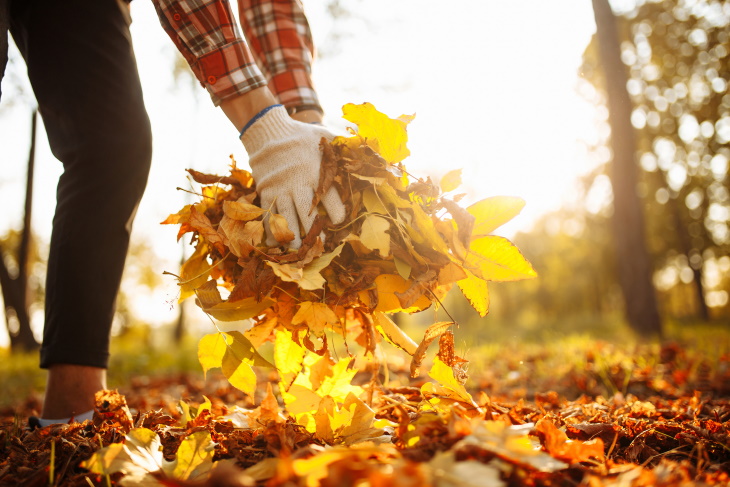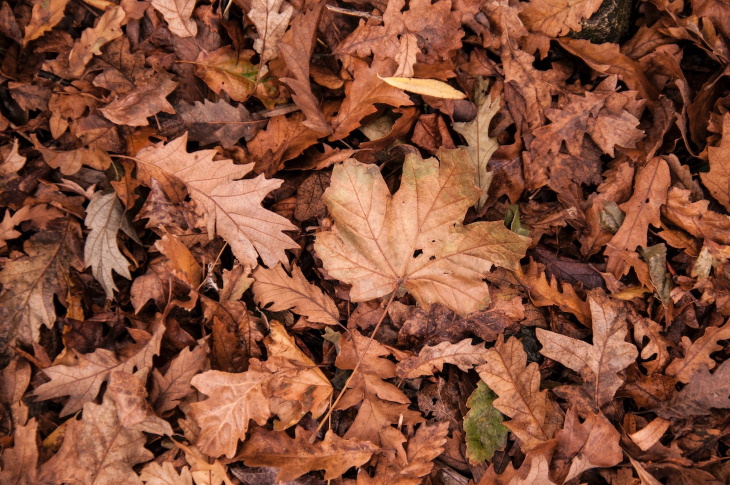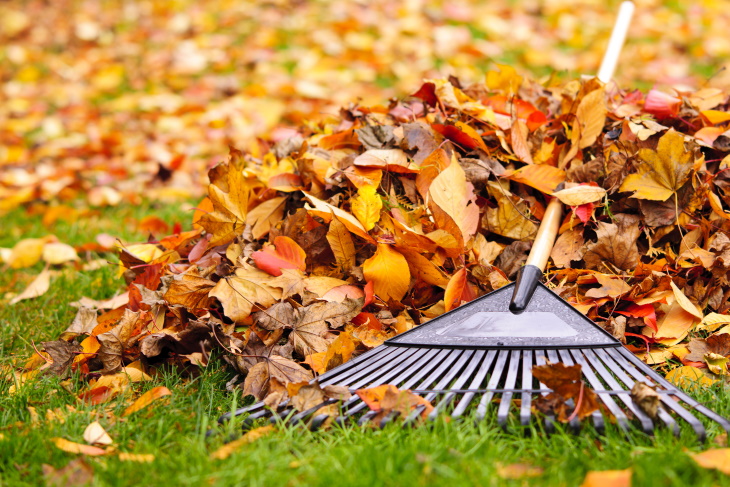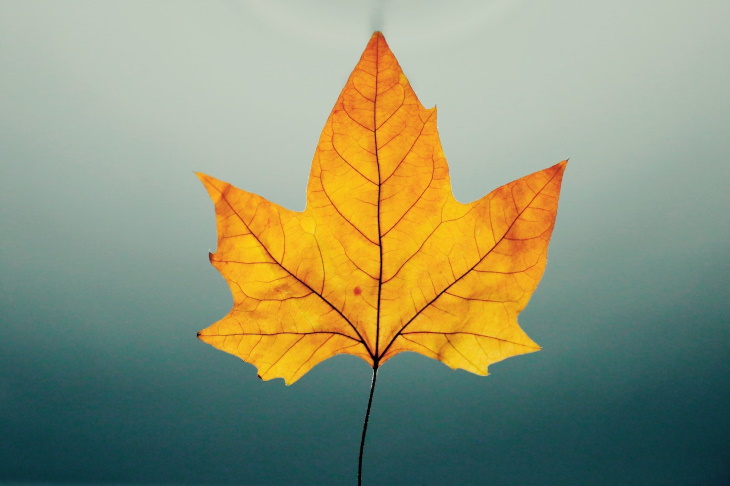
We love repurposing household items whenever we can; it benefits both our planet and our wallets. And with the season of leaf raking around the corner, we wanted to figure out how to reuse all those fallen leaves instead of bagging them up and sending them to a landfill.
You will be pleasantly surprised to learn that dry leaves can enhance your garden for free instead of being ordinary, cumbersome trash. That’s because leaves contain biodegradable ingredients, including carbon, that work great as compost, fertilizer, or mulch when broken down. The only trick is to shred them first with a lawnmower or specified leaf mulcher.
Below we list 5 handy ways to reuse shredded dry leaves in the yard and garden.

If you have a compost pile, throw some fallen leaves in there too. Shredded leaves are a source of high-carbon materials (also called brown materials). Dry leaves also absorb liquids, preventing your compost from turning into a soggy disaster.
Leaves should be layered and mixed with regular food scraps and grass clippings (green materials). Let the compost sit over winter, turning the pile as needed during the frigid months. By the beginning of the planting season, you’ll have compost ready for use.
Have too many leaves for your compost bins? No worries. If you have some free space in your shed, you can bag up and save the remaining leaves. You can then use these leaves in the spring to make another batch of compost.
Related Article: Make a Compost in 6 Easy Steps

Do you have a mulching lawn mower? If so, you’re in luck, as you can save yourself a lot of time you’d otherwise spend raking and blowing yellow leaves. Just run the leaves over with the mower, and it will shred them into pieces small enough to break down during the winter. Just don’t forget to spread all the shredded leaves evenly across the lawn to give the entire lawn plenty of nutrients. The layer of shredded leaves should be thin enough for the grass to get some sunlight.
Be warned that the same trick doesn’t work if you decide to leave piles of whole leaves on the ground; this can smother and harm your lawn, and you’ll likely need to collect all those wet, half-decomposed leaves in the spring.
You can also creatively reuse dry leaves with DIY decorations. Click here for a few stunning ideas - 7 DIY Projects With Fall Leaves, Including Preservation Methods

Leaf mold is a soil amendment that consists of dry leaves mixed with garden soil or compost. The way to make it is this - simply layer some shredded leaves with equal amounts of garden soil, and leave the pile alone for 6-12 months. If the pile dries out, sprinkle it with water to keep the soil moist.
When it’s ready, you’ll have plenty of leaf mold, which you can then use to fertilize flowerbeds, vegetables, and potting soil. Leaf mold helps the soil retain water while keeping it light and breathable still.

Shredded leaves work as the perfect organic mulch for flower beds and vegetable gardens. You can also use them around trees, shrubs, and big plant containers that you can’t move indoors during the winter.
Sprinkle a 2-3-inch thin layer of leaves onto the flowerbed (or whatever you choose to mulch), making sure that the mulch is NOT touching the trunks or stems of the plants. This organic mulch will hold in the warmth and moisture in the soil and prevent weeds from taking over the area. The shredded leaves will also act as a fertilizer as they break down, providing the plants with much-needed nutrients all winter and early spring.
Related article: 7 Perfect Ways You Can Upgrade Your Home During Fall

Though we cannot advocate leaving all the leaves wherever they fall, you can certainly place a few piles of dry leaves in the areas of your yard and garden not covered by lawn. By leaving those little piles of leaves, you’re doing mother nature and its creations a big favor.
This is because dead leaves act as a refuge and hunting ground for all sorts of animals, including birds, wood frogs, chipmunks, salamanders, and insects. Spiders, caterpillars, and other bugs especially rely on piles of leaves, and birds then come to feed on those insects. Therefore, if you want to attract a variety of beautiful birds to your garden, this is a great way to do so while also letting yourself be a little lazy.
H/T: The Spruce, Family Handyman